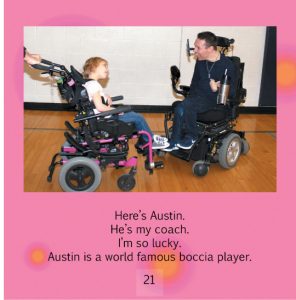Diversity, Disability, and Dolls

Contributed by Vera
Lynne Stroup-Rentier, Ph.D., Author
Public Law 99-457 passed in
1986, amending the Education of the Handicapped Act and requiring states to provide
appropriate and free public education to children with disabilities ages 3
through 5. Shortly after the implementation of this law began in 1991, I was
fortunate enough to work with infants, toddlers, and preschoolers in
Washington, D.C. As one of the few white women on staff, I learned much about
diversity and disability. However, the lessons I learned often left me dismayed
about how society represented each and every child. I learned one such lesson when
I wanted to find dolls that the children and I could wash together in the water
table. I liked this activity because I could talk to children about the
different aspects of the dolls, like skin color. I went in search of black
dolls for the water table because the children in my class were black and
Hispanic. I rarely had a white student in my class. I went to store after store
after store looking for dolls. There were white babies everywhere but no black
or Hispanic babies. I finally found a catalog I could order them from but could
not get over that fact that dolls of other races were not available in stores. These
were the same stores my students’ families shopped in every week.

